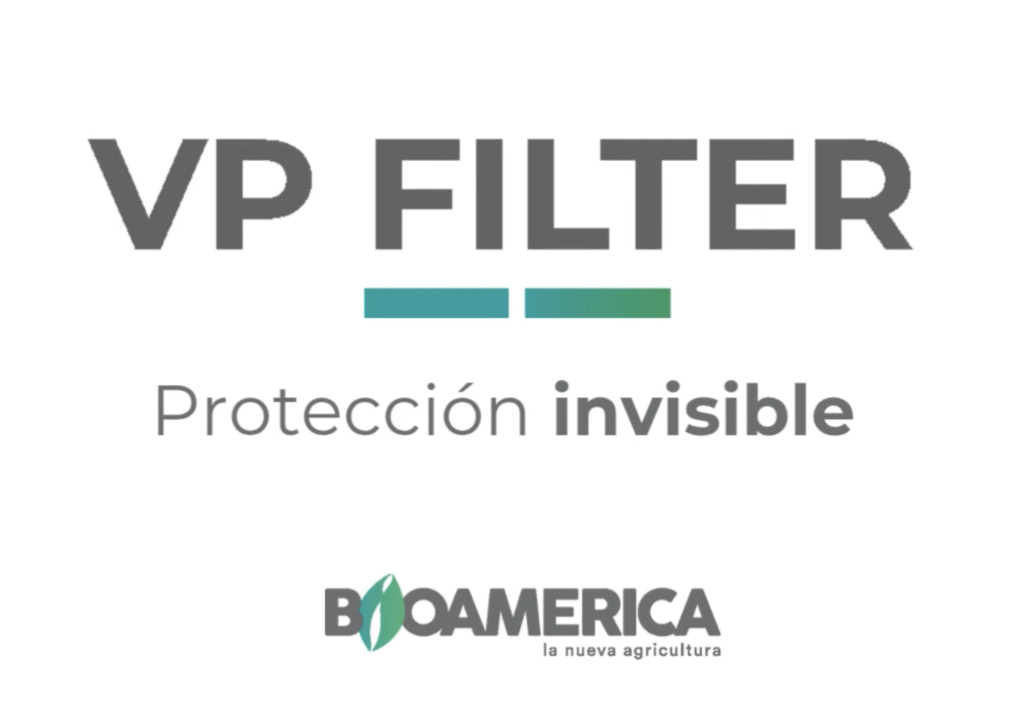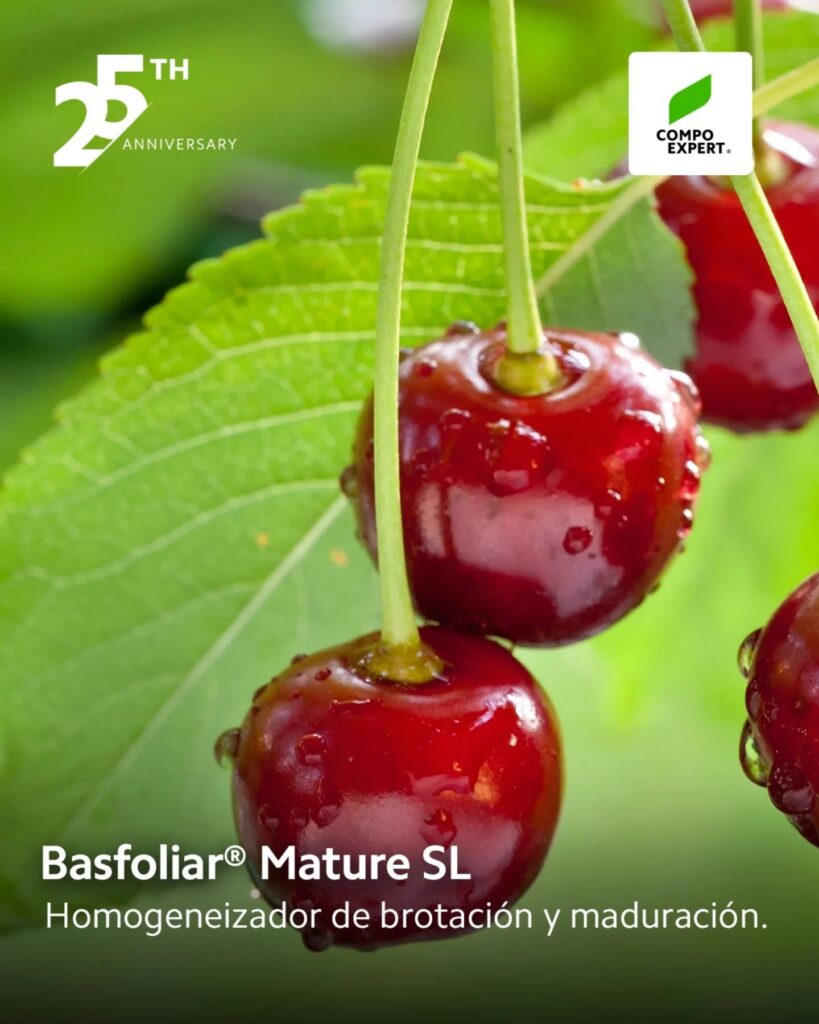By: Carlos Tapia, Agricultural Engineer, M.Sc – Technical Director Avium; Jorge Lundstedt – Assistant Manager of Market Access, Central Region UPL Chile; Ricardo Rojas, Agricultural Engineer – Technical Advisor Avium.
Phytohormones are chemical messengers involved in a wide spectrum of physiological and biochemical processes in plants at very low concentrations. These molecules are produced by plants in response to an adverse environmental condition (stress factor), whether due to abiotic climatic factors (frost, heat, drought, cold, hail, etc.), biotic factors (bacteria, viruses, fungi, nematodes, insects), phenological events (root growth, ripening, fruit set, flowering, budding) or their production may also be associated with cultural management of the orchard (pruning, thinning, nutrition, transplants, etc.). When faced with a stress factor, the first response of the plant is at the cell membrane level. What is generated is a biochemical signal, which is perceived by specific receptors, generating changes at the cellular level, which in turn trigger a series of genetic activation processes at the nuclear level, activating specific genes for that stress factor. This adaptation of plants to adverse conditions is known as plasticity.
Conventionally, phytohormones are classified into nine classes: auxins, abscisic acid, cytokinins, gibberellins, ethylene, brassinosteroids, jasmonates, salicylic acid and strigolactones, the latter being considered a plant hormone since 2012. In the near future, peptides and Karrikines will join this list of plant hormones. In the 19th century, Charles Darwin first suggested that certain chemical compounds are capable of stimulating crop growth. Since then, a great deal of work has been done to study the stimulating impact of phytohormones on the quantity and quality of crops and vegetables.
Gibberellins
Gibberellins (gibberellic acid (GA)) were discovered in studies on the ascomycete fungus Gibberella fujikuroi in rice plants, which were later isolated and named gibberellins А and В and subsequently detected in extracts of the seaweed genus Fucus L. Most gibberellins are acidic and are indicated as GA (gibberellic acid) followed by a number corresponding to the order in which the gibberellin was discovered. GA1, GA3, GA4, GA5, GA6 and GA7 are the most active forms, and the rest are their precursors. Furthermore, the amount of gibberellins in plants may reach more than 130 types, while only a minority of them are biologically active. Among the main characteristics of GA, it is attributed to its participation in fruit development, cell elongation, internode lengthening, flowering promoter in annual plants, flowering inhibitor of perennial plants and germination promoter.
Sink effect and size in cherries
Attractive, good-sized, firm, uncracked cherries with long, hydrated pedicels are desirable conditions for consumers and, therefore, preferred by producers.
The recent increase in cherry production worldwide, and particularly in Chile, has given new importance to fruit quality and quality maintenance throughout the supply chain. However, with the adoption of early rootstocks that control vegetative expression, there is a tendency for the leaf/fruit ratio to be lower, leading to yields above the maximum productive potential, thus obtaining poor quality fruit (Whiting and Lang 2004; Whiting et al. 2005).
Conventionally, thinning has been used to improve the source-sink balance and fruit quality, however, this management is becoming increasingly complex to implement due to the shortage of labor, so manipulating the source-sink activity with exogenous plant growth regulators appears as an option.
In this sense, gibberellic acid (GA3, the most commonly used form) is used to increase the hardness and size of fruits, both in self-fertile and cross-pollinated varieties.
The mechanism by which this increase in fruit size occurs, at the cellular level via GA, is through the stimulation of the proton pumps located in the cell wall; this stimulation causes an acidification of the cell wall by activating enzymes called expansins. These enzymes break/cut the bonds that exist between the cellulose molecules, making the cell walls more elastic. Subsequently, it is the entry of water that allows the elongation of the cells, causing an increase in size.
Exogenous application of phytohormones may be useful to return metabolic activities to normal levels. At a certain concentration, GA3 has been shown to be beneficial to the physiology and metabolism of many plants subjected, for example, to abiotic stress, as it may provide a mechanism to regulate the metabolic process based on antioxidant and sugar signaling enzymes.
The responses in fruit quality and characteristics obtained with GA3 applications are varied. Cherries treated with GA3 will be firmer, larger, and heavier, compared to controls, as demonstrated by several studies (Basak et al., 1998; Choi et al., 2002; Clayton et al., 2006; Facteau,1984, 1986; Facteau et al., 1985a, 1985b; Horvitz et al., 2003; Kappel and MacDonald, 2002; Kupferman, 1989; Sive and Resnizky, 1988).
Fruit growth depends on the accumulation of dry matter and water and is determined, and may be limited, by its source-sink capacity and the availability of metabolites in the plant. The sink capacity of the fruit is considered the dominant factor in the competition for photoassimilates and is initially determined by the quality of the flower and the number of flowers formed on the tree (Guardiola, 1997).
Experiences in Chile
Various works carried out by the Avium SpA research and development team, together with cherry producers in Chile, have demonstrated the great effect that the use of GA3 has as a complement to the nutritional program in cherry trees, on the most influential factors in their productive potential, such as soluble solids, dry matter and hardness (Durofel) and, above all, regarding fruit size, where each of these parameters have been directly and positively influenced by exogenous applications of GA3. (Tapia, C. 2015).
Similarly, as shown in Tables 1 and 2, regarding the size and weight of the fruit, as well as the size distribution, the effect of complementary applications of GA3 has been shown to have a clear positive impact on the aforementioned parameters (Tapia, C. 2015), highlighting larger sizes and weights of the fruit on average, as well as a clear shift in the size curve towards the most commercially attractive sizes.
The treatments (15, 30 and 45 ppm) were carried out on the Lapins variety, with cultural management of an orchard for export fruit and standardizing all treatments according to their specific load. The application of AG3 in all treatments was carried out at the straw-colored stage/beginning of veraison using a cover according to 100% of the canopy volume of the treated orchard.


In the weight and diameter responses of fruit (Table 1), all treatments have differences with the control without application, regardless of the concentration of use in each one.
However, when analyzing the distribution of sizes (Table 2), there are significant differences for each treatment when analyzing each size category according to the range of equatorial fruit diameter, but at the same time there is a direct relationship to the concentration of use, having a higher proportion of fruit above the Jumbo size (> 26 mm) as the concentration of use in ppm increases.
In conclusion, exogenous applications of Gibberellic Acid of the GA3 type, after the straw-yellow colour breaking stage (stage III/beginning of veraison), increase the size and hardness of the fruit, optimising the source-sink activity of the fruit. Finally, in relation to the concentrations to be used, as already mentioned, these will depend largely on environmental factors such as temperature, precipitation, humidity, water and nutritional conditions and light (Facteau et al., 1985) as well as on the use of different varieties (Usenik et al., 2005).
Literature
Fichet, T. (2020). Course on plant hormones and growth regulators.
Alcántara, J., Acero, J., Alcántara, J., Sánchez, R., (2019). Main hormonal regulators and their interactions in plant growth.








